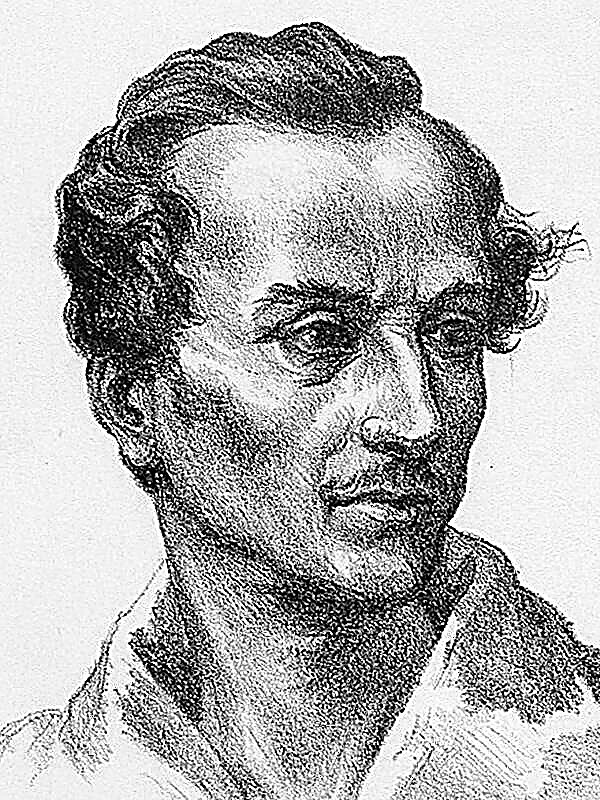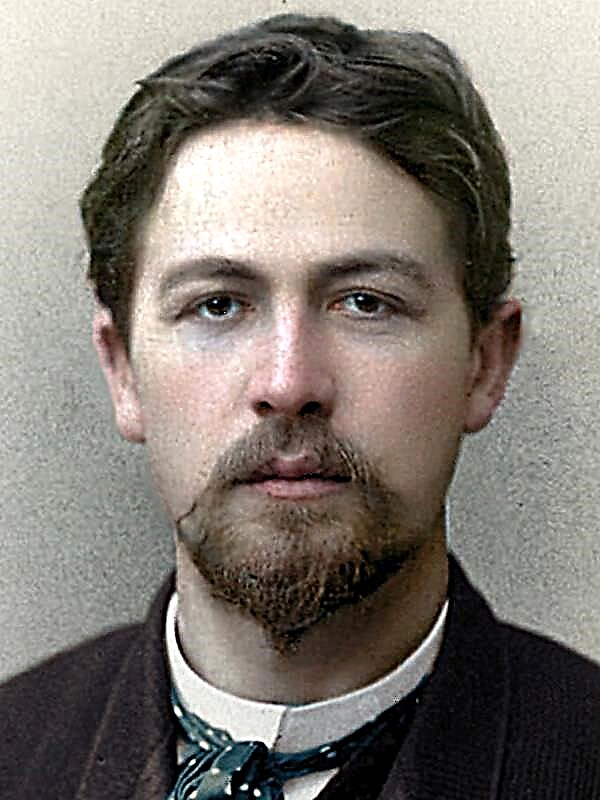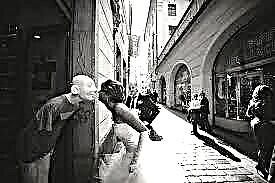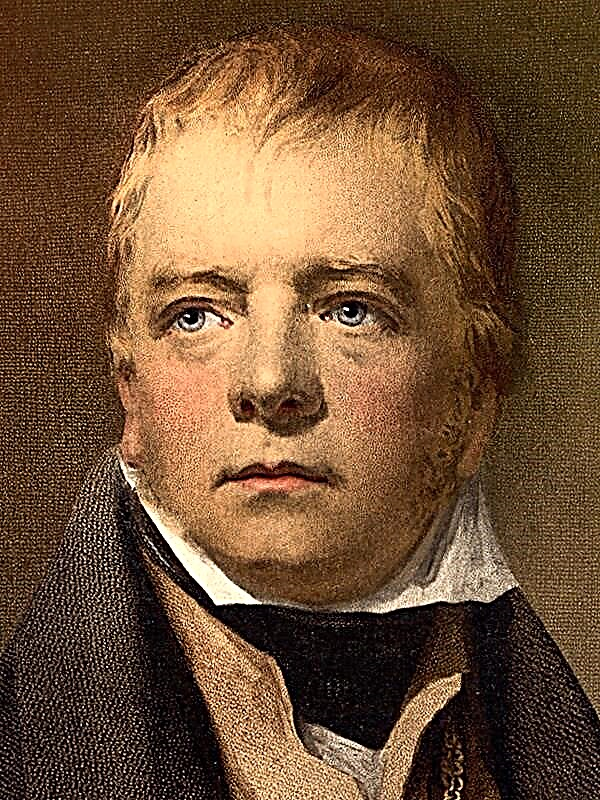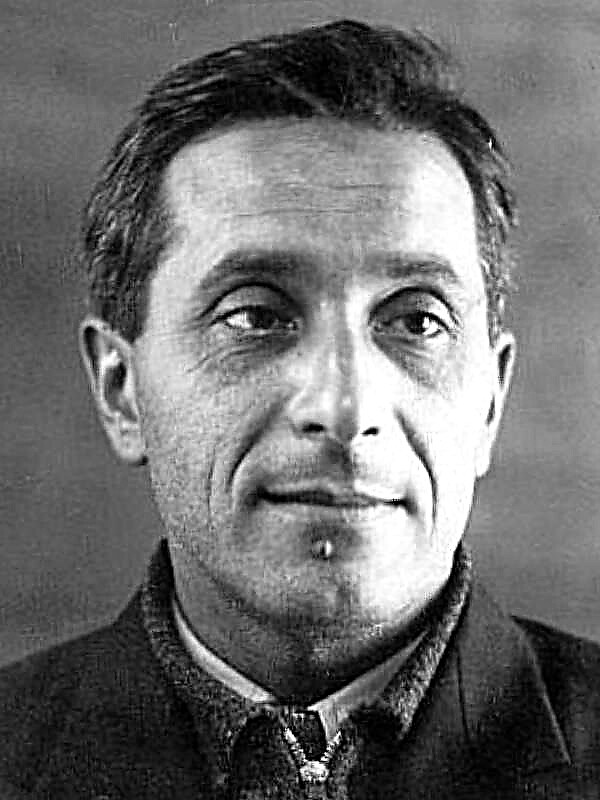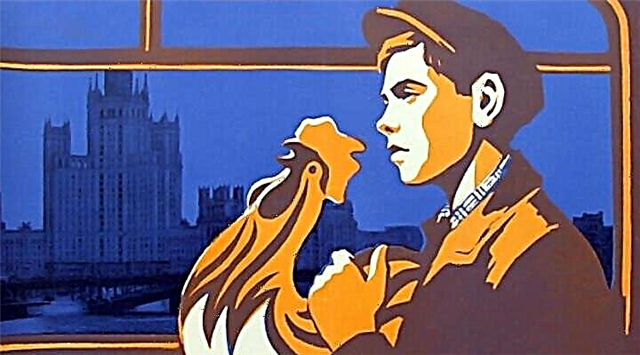“Now is not the time for love affair,” said the loud-voiced poet-innovator. Vladimir Mayakovsky did not differ in sentimentality, did not throw himself in loud words about eternal love, but with what uncontrollable power he felt and loved! Lilia Brik recalled: “Mayakovsky experienced everything with hyperbolic strength - love, jealousy, friendship. He didn’t like to talk ”... He didn’t like to talk about feelings, he“ splashed ”them on paper, as if“ shouting out ”with an pen unspeakable. That is why in the poems of the author such a storm of emotions, and the poem “I Love” is proof of this.
History of creation
To whom is “I Love” dedicated? Lily Brik - a woman who became the cause of joy, misfortune and mental suffering of the young poet, as a result of which masterpieces were created.
It’s useful to suffer Volodya, he will suffer and write good verses, - the culprit of his torment claimed.
She was Mayakovsky’s main muse, and despite the strangeness of their relationship (the lady was married and lived with two men at the same time, not hiding this), this love was strong, bright, unrestrained. Only in such love could hyperemotional poems of Mayakovsky be born.
The work “I Love” was written since November 1921, during this period love and understanding reigned between the poet and his muse, hence the joyful and life-affirming mood. The poem was added in February 1922 during their joint trip to Riga.
In parallel with “I Love”, Vladimir Vladimirovich wrote an autobiography “I myself”, and it is no accident, because the poem is also autobiographical in nature: the author describes how love was born in his heart from childhood, and what happened in him at the time of writing.
Genre, size, direction
As you know, Mayakovsky was an innovator, and his innovation was expressed in everything: in versification, in the expansion of the poetic dictionary, in the use of new techniques and in his easily recognizable writing style.
Mayakovsky argued that poetry should be read aloud to the people, which is why he often used rhyming "for hearing" and not "for eyes." So in the poem "I Love" inaccurate rhymes are often found, based on the coincidence of not all, but individual sounds, but this inaccuracy is compensated for when reading aloud. In this case, the form of versification with changing types of rhyme, that is, the lines rhyme in different order. For example, in the chapter “Taki with me” there is no regularity in the alternation of rhymes, and some lines do not rhyme at all (“harbor-underwater”, “knight-rummage”). The work is written as part of Mayakovsky’s favorite versification system, that is, tonic.
“Love” is one of the poet’s few poems, which is permeated with lyricism that is not inherent in his work. It is written in the genre of love lyrics, and this kind of creation is rarely found in the poetic heritage of the poet. Vladimir Mayakovsky belonged to the futurists, manifested himself as a rebel, “agitator”, “throat-leader”, wrote rather “flashy” verses filled with protest. However, this poem, despite the fact that it refers to futurism, as indicated by free metrics, occasionalisms, compound rhymes, reveals the author’s deep feelings, turning his soul inside out.
Composition
The poem “Love” is quite voluminous, therefore it is often called a poem. The work consists of 11 chapters, each of which has its own name. By the names of the chapters, you can understand that the work is a kind of short biography of Mayakovsky’s feelings, his life, painted in stages, thoughts that arose as he grew up and gave birth to his “love-community”.
- The lyrical narrative begins with a description of the poet’s childhood, adolescence and youth, and we, readers, are given the opportunity to learn firsthand about Mayakovsky’s past.
- The following chapters describe the "present" of the author, what happened in his life at the time of writing the poem.
- The work ends with a kind of oath promise to “invariably and faithfully” love.
Images and Symbols
Vladimir Vladimirovich is a futurist poet, and, as you know, futurism was born in a polemic with symbolism. However, in Mayakovsky’s work one can find the most pronounced contradiction caused by the unity of futuristic principles and symbolist traditions rejected by the futurists. In other words, in spite of the fact that “the beasts” declared the uselessness of the “intermediary symbol”, the author creates and uses his images, symbols, and the poem “I Love” is rich in them.
The poet writes that he is in love with the peephole 103 of the camera, and would give everything for a wall yellow hare. These images can be understood only by recognizing the events that occurred with Mayakovsky during this period. In 1909, he was imprisoned in solitary confinement at number 103, where he tried to see through the peephole a “yellow hare,” that is, a ray of the sun. In general, the image of the sun in the work of Vladimir Vladimirovich appears as a kind of sacrifice, destroyed by the "all-seeing eye", which is endowed with human qualities.
Turned the sun back and then belly - until it dawns under the spoon, ”the poet wrote in the chapter“ As a boy.
In the same part, the image of a hero appears, which the whole world can love:
Where does this place come from in this arshin - to me, and to the river, and to rocky rocks ?! ”- the sun is surprised, looking at the lyrical hero.
Themes and Issues
The theme of the poem “Love” is obvious - the name speaks for itself. Love. Giant, verified, buzzing in the heart, Mayakovsky love. However, in parallel with the "community - love" there is a completely opposite and pronounced feeling: "community - hatred." With what immeasurable power the poet loves, with the same he hates. “I used to hate fat people since childhood,” Mayakovsky writes with contempt about people who are used to hoping for their welfare, buying love for money. Both feelings were born in him from childhood, the lyrical hero lives on emotions, there is no indifference in him, there is love and there is hatred, two extremes.
In addition to the personal experiences of the poet, the poem touches on social and moral problems. Mayakovsky repeatedly mentions the "intelligentsia", which lives on incomes, position in society, pseudo-feelings, the desire to please others with their flattery. "Be in love? You are welcome! Publish for a hundred, ”he describes the essence of the people he hates. The lyrical hero himself is presented as opposed to the hardened upper class: his pockets are empty, but his heart is plowed.
Idea
The main idea of the poem, what Mayakovsky wanted to convey, was, first of all, his love for Lilia Brik, because this work was dedicated to her in recognition. The poem itself is the propaganda of love, and it doesn’t matter whether it is unrequited, complicated, confused, the feeling itself, like air, is necessary for life. This is love for everything that surrounds: the river and the ray, and the puddle, and the rocks, and people. The poet is sure: the ability of all-consuming love is given to everyone, only many hide it, bury it deep in itself. According to Mayakovsky, the heart is not in the body, but the body is located on our heart, which means that the person is not the body, not the exterior, the person is that which is deeper - the heart, and this poem is a reminder to that. This is his main conclusion in life.
Love is life, this is the main thing. Love is the heart of everything. If it stops working, everything else dies, becomes imaginary, unnecessary, - wrote Mayakovsky in a letter to Lilia Brik.
This phrase contains the meaning of the poem, this is what I wanted to convey, convey Vladimir Mayakovsky.
Means of artistic expression
The main means of artistic expression in the poem "I Love" is the antithesis. The lyrical hero is opposed to callous and mean to the manifestations of sincere feelings for society. This is expressed by the frequent use of the pronouns “I” (lyrical hero) and “they” (society):
They will take the earth, having robbed it, stripping it, they will teach. / And I taught geography on the sides.
Mayakovsky also created new images for comparisons, metaphors: wanting to show his joy, the lyrical hero calls himself a “wedding Indian” or, speaking of society, the author calls them “human chicks”. All Mayakovsky’s feelings and emotions are hyperbolized: “A solid heart is buzzing everywhere.” To genuinely love, to be one big heart, to give love without requiring “surrender” - that’s exactly what Vladimir Mayakovsky’s poem “Love” teaches us.
The innovative features of the author are expressed in the frequent use of neologisms. For example, he replaces the word “dana” with “daden”, instead of “stale” he “becomes stale”. People miraculously turn into "people." Mayakovsky’s lyrics are “bologna’s”. The world is shrinking to a "little world." Public transport communicates with people in the "tram" language.

